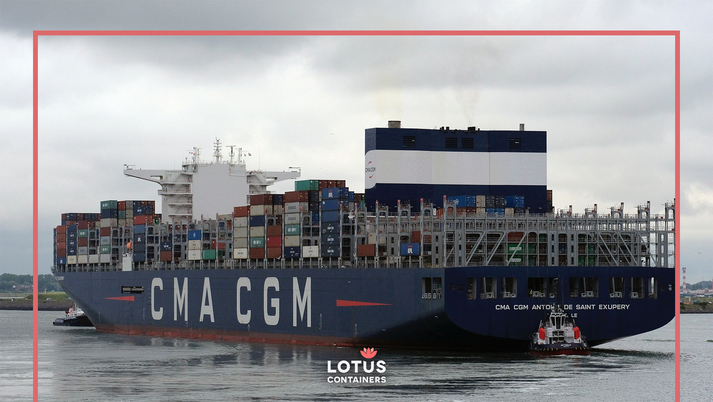Shipping accounts for 3% of global greenhouse gas emissions, higher than the United Kingdom and France combined. Despite this dominance, the industry has been reluctant to decarbonize, partly due to the difficulty of the task. Though some of the companies like CMA CGM had started acting by taking steps for a cleaner tomorrow. It is still a long way ahead as it necessitates collaboration between all countries with ports and a fragmented private sector, with most corporations owning only a few ships.
However, during COP26, the United Nations climate meeting in Glasgow, on Nov. 10, 22 nations made a crucial step toward ensuring low- or zero-carbon shipping a reality. By 2025, the governments have agreed to establish six ocean trade routes that will serve as "green corridors," providing grounds for maritime technologies that have the possibility to reduce carbon emissions of the shipping and shipping container industry.
The Clydebank Declaration attempts to concentrate industry attention on certain maritime container vessel routes, such as those connecting Asia and Europe, as well as certain ports in nations where the government agreed to zero-carbon shipping.
In an effort to assist the shipping sector to decarbonize, 19 nations have signed a statement to construct "green shipping corridors" – zero-emission marine routes connecting two or more ports.
Australia, Belgium, Canada, Chile, Costa Rica, Denmark, Fiji, Finland, France, Germany, Republic of Ireland, Japan, Republic of the Marshall Islands, Netherlands, New Zealand, Norway, Sweden, United Kingdom of Great Britain, and Northern Ireland, and the United States of America are among the first signatories of the Clydebank Declaration. Since then, three additional nations, Italy, Morocco, and Spain have joined the list of the declaration’s signatories.
China is conspicuously absent, despite the fact that it is the world’s leading exporter of products and the origin port for or we can say home to the busiest ports in the world and also the busiest trade route. That doesn’t rule out the possibility of a future agreement, since China just opened the world’s first zero-carbon facility at Tianjin Port.
The signatories made certain pledges:
- To make it easier to join forces with ports, operators, and others in the value chain in order to expedite the decarbonization of the shipping industry and its fuel supply through green shipping corridor initiatives.
- To discover and investigate potential solutions to the impediments to the creation of green corridors. This might include legislative frameworks, incentives, information exchange, and infrastructure.
- Green corridors should be included as part of the formulation or revision of National Action Plans.
- When seeking green shipping lanes, try to ensure that environmental concerns and sustainability are given more weight.
Green shipping corridors will be constructed in such a way that two or more signatories to the declaration determine and take efforts to decarbonize a specific common marine route with interested ports, operators, and others along the value chain.
A signatory to the declaration can also take action to decarbonize a specific domestic marine route under their authority and control by working with interested ports, operators, and others along the value chain. Some signatory nations expect that the green shipping lanes would help them meet the ZESM’s intermediate goals of placing at least 200 zero-emission vessels into service by 2030 and having such ships account for 5% of global bunker fuel use in deep-sea traffic.
In a declaration released at COP26, on November 10th, the signatories said, "It is our aspiration to see many more corridors in operation by 2030."
“Today’s declaration is a great first step towards cleaning up our ports, port communities, and the maritime sector,” Dan Hubbell, a campaign manager at Ocean Conservancy, an environmental organization, said in a statement.
“We need to see today’s declaration followed up with progress towards strong mid-term measures,” he added, looking ahead to a conference of the International Maritime Organization, a UN organization, later this month, where countries will debate a goal of zero shipping emissions by 2050.
“We thank the United Kingdom for leading this clean shipping initiative and commend all first-mover nations, but warn the Clydebank framework leaves room for delay tactics and fossil fuel loopholes. We urge partner countries and ports to act quickly to set immediate, interim, and ultimately mandatory benchmarks to phase out all fossil fuel ship pollution along their shared corridors,” Madeline Rose, Climate Campaign Director, Pacific Environment had commented.




